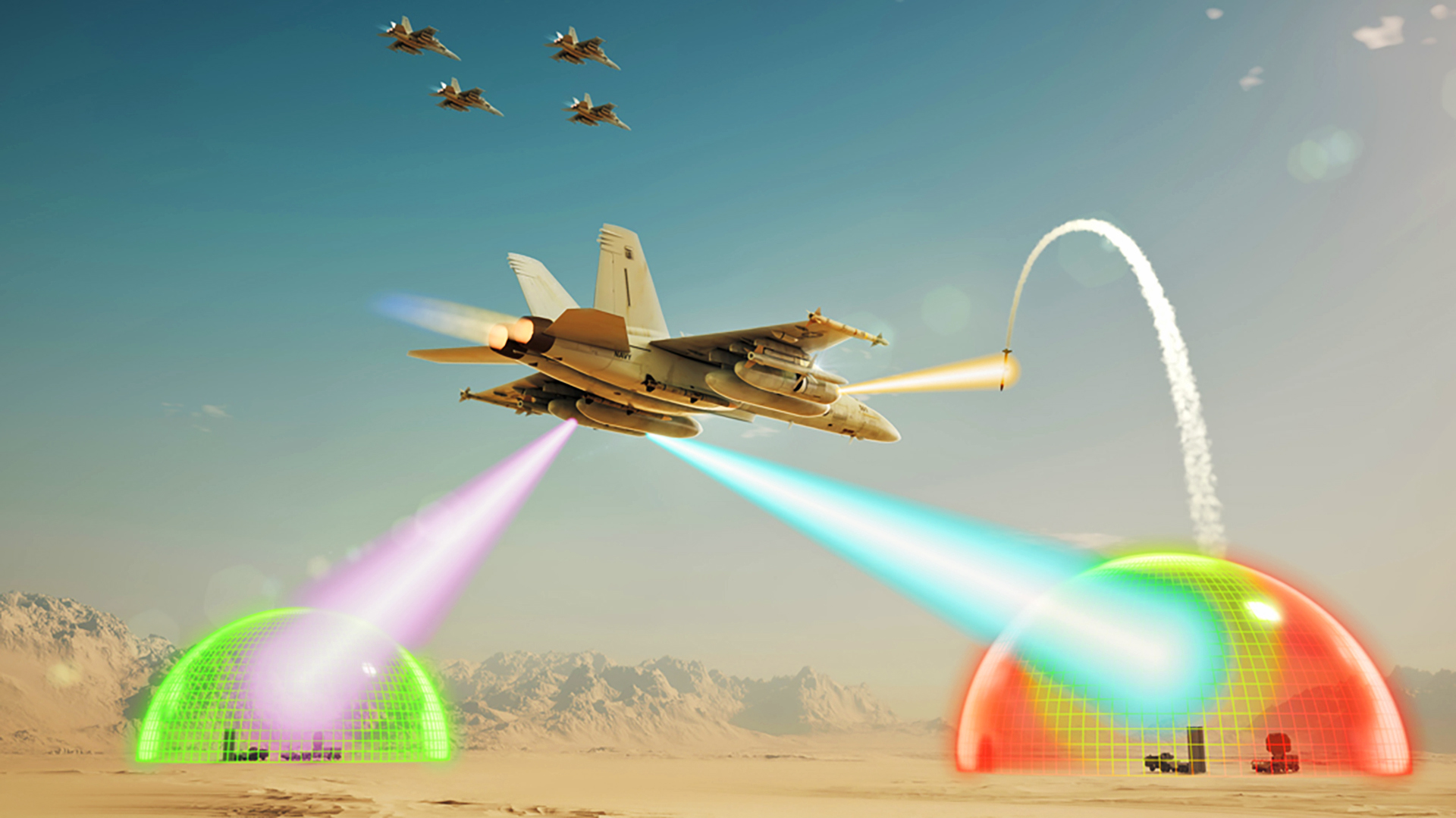Electronic warfare (EW) has taken on new prominence as the threat from near-peer adversaries has ballooned in recent. Who can best dominate the radio frequency spectrum and take the electronic fight directly to the enemy will have a massive advantage in tomorrow battles.
To find out more about the state of play in offensive EW, we sat down with Chuck Angus, director of business development in Naval Power at Raytheon. He oversees the company’s cutting-edge offensive electronic warfare (EW) portfolio. Angus talked with The War Zone about the latest in offensive EW, his company’s new AN/ALQ-249(V)1 Next Generation Jammer-Mid Band (NGJ-MB) electronic warfare pods (currently installed on EA-18G Growlers aboard the aircraft carrier USS Abraham Lincoln) and the applicability of such systems on sixth-generation fighters and loyal wingman drones. This conversation, which took place on the sidelines of the Air & Space Forces Air, Space & Cyber conference in National Harbor, Maryland, has been slightly edited for clarity.
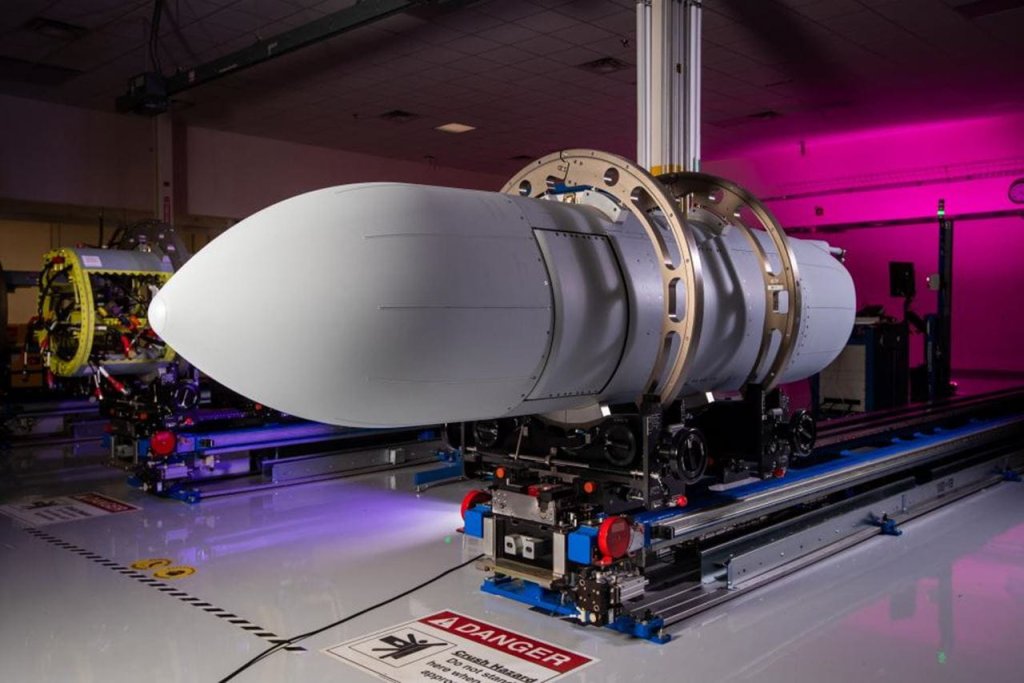
Q: Talk about how electronically scanned array (AESA) antennas like those on the NGJ will improve offensive EW.
A: What’s interesting is that AESA arrays can do lots of things differently than some of the steerable arrays that we had. So essentially, the AESAs, based on their field of regard, can do a lot of things in a lot of places simultaneously, and so you think about electronic attack systems like NGJ, where we’ve got eight AESA arrays from that, for those, for that shipset, from those two pods. And it can do a lot of things for a large breadth of area.
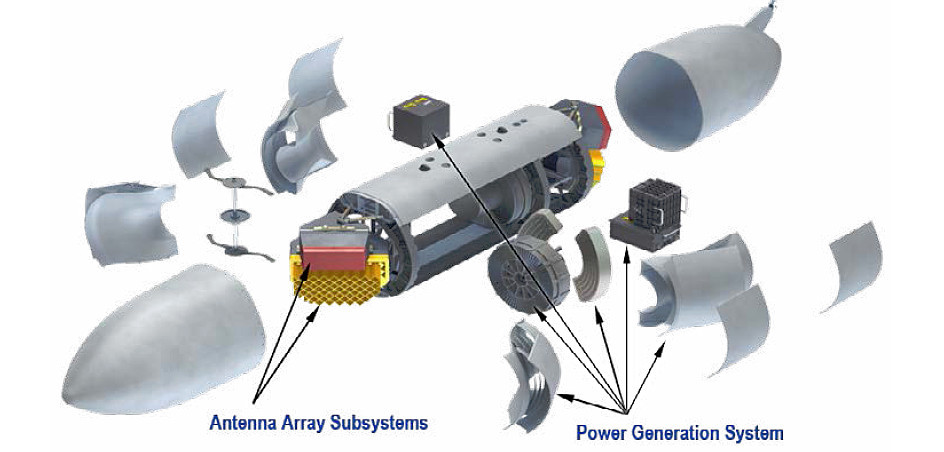
If we talk about electronic attack per se, the way those arrays are set up, the way it was designed, is that, is that I can attack an adversary out the front and the side, and then as I’m ingressing. Once I egress, that system, working together, can move those assignments from one set of arrays, from the front to the back, from the left pod to the right pod. The point of it is, is that when you have that multifunctioning array, and you have some autonomy that goes with it, you can move those assignments or jobs or whatever it’s going to be doing, whether it’s comms or delivering payloads or whatever it is, it can do it around that platform, even while it’s making a turn. So I think it’s really, really important. And fire control radar, is the same way, right? So now you got a fire control radar, and you’ve got a sensor and stuff, and if you get them all fused together, I think that that’s a very valuable contribution.
(You can read all about what multi-function AESA arrays distributed around an aircraft are capable of in this past special feature of ours.)

Q: What kind of effects can next-generation EW have on adversary systems? Can it destroy radar seekers on incoming missiles, for instance?
A; I’ll talk about offensive electronic attack, because that’s distinguishing it from self-protect, right? So as an example, what you’re really trying to do is protect a protected entity with another entity. So, as an example, a Growler flying in formation with a [F/A-18] Super Hornet, right? The Growler is not protecting itself. That’s not what it’s about. It’s protecting the Super Hornets flying out in front of it. And so it’s protecting that Super Hornet by denying that adversary radar from detecting it so it can drive in closer and drop its weapons right again when you ingress and egress, you can stay on that target at the same time. So not only is it reducing the detection range of a platform that’s dropping weapons, it’s also protecting that platform against an air-to-air threat.
So maybe it’s a Chinese fighter or a Russian fighter. If you can reduce that fighter’s ability to see you, you get a chance to shoot first. Great combat advantage. The other thing, I think it’s really important, is when we talk about magazine depth, and everybody’s interested in ‘how many weapons do I have?’ So again, if you can reduce that adversary radar from seeing that weapon that’s inbound until it gets really, really close, then you’re going to improve that capability to attack that target, support those weapons all the way to target, reducing the amount of weapons you have to fire, right? And, by definition, increasing your magazine depth.
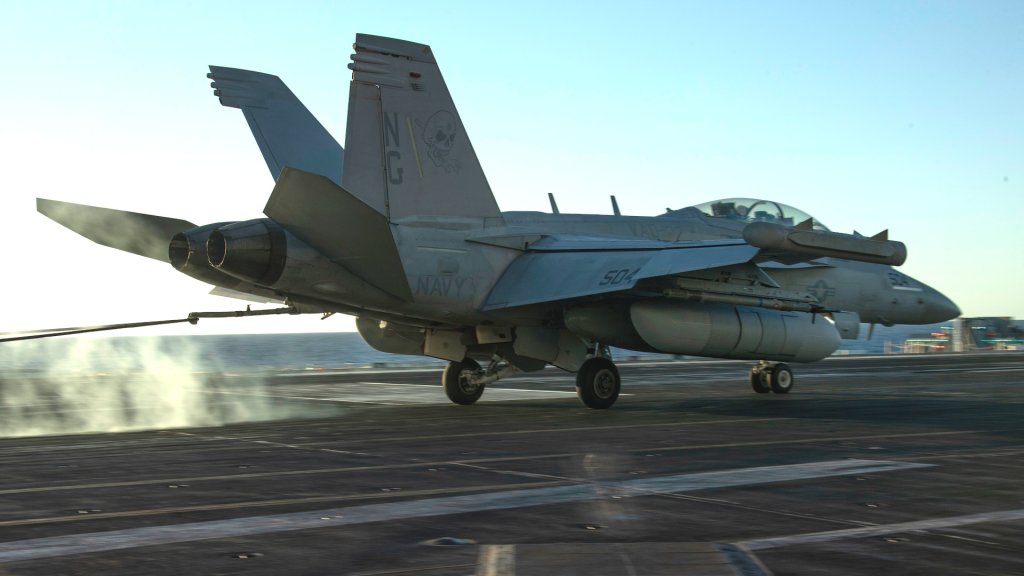
Q: Can it affect inbound air-to-air missiles?
A: I probably can’t talk much about that. I’ll say it this way, if a weapon was using a radar and you had the ability to affect a radar, I could imagine that there may be some effect.
Q: What about distributing EW to platforms across the battlespace and connecting them for cooperative EW via networking? How far along is this and what are the advantages?
A: Certainly a lot of advantages. And I think the advantages, besides the fact that the guy over here can send an assignment hundreds of miles away, and get something done over there, that’s an incredible advantage. I think the ability to team them together on a specific target would also be an advantage.
One of the things that we talk about in electronic attack is the ability to do simultaneous targets, multiple simultaneous targets, with multiple techniques. So the ability to attack this target while the same time attacking another target from the same AESA array that you’ve that you’ve divided. That’s the idea behind the AEASs. You don’t have to turn it. You can divide it and split that beam. So not only can you attack multiple simultaneous targets, but you can also move from one to the other really, really quick. And I think that’s one of the great benefits of something like an electronic attack that you can move quickly so sometimes that threat radar may not even know that you’ve left it and gone to something else. So imagine multiplying that capability across the board. It doesn’t have to be a small platform. It can be much larger platforms. It can be multiple types of aircraft, bombers, fighters, maritime patrol, UAS, and mobility aircraft, right? That whole thing can enable that joint fight. And it’s not just about the capability, it’s about the capacity. That was your point. Your point was, ‘how can I increase the capacity?’ Then working together. That’s what you’re doing. You’re increasing the capacity.

Q: Are you looking at cognitive electronic warfare on this?
A: So that’s important, and we have been looking at it, but I can’t really discuss the work that’s going on.
Q: What can EW do as far as making things appear to the enemy that are not there?
A: So the nice thing about having a software-defined radio is that any equation that can be built in MATLAB [a programming platform designed specifically for engineers and scientists to analyze and design systems and products], you can project. So you can imagine that you could do a lot of things with RF energy. I can’t talk about some other things that it can go do. But certainly, there are a lot of effects that you can do with AESA arrays and different techniques.
Q: What do you think EW will look like on a Next Generation Air Dominance (NGAD) sixth-gen fighter or a collaborative combat aircraft (CCA)?
A: Well, I understand that there are still some requirements generation going on about what those missions are, but it’s clear to me that electronic attack is an enabler. It has to have a position as part of that, right? Is it high-powered? That’s a great question. It probably depends on the platform. Right? Is it going to be very directed, is it going to be attritable? Because it’s a question about what that solution is. Could it be carried in a pod? It could be carried in a pod. It would be a small pod, but I still think you have to have power generation capability, because some of these platforms are maybe power starved anyway.
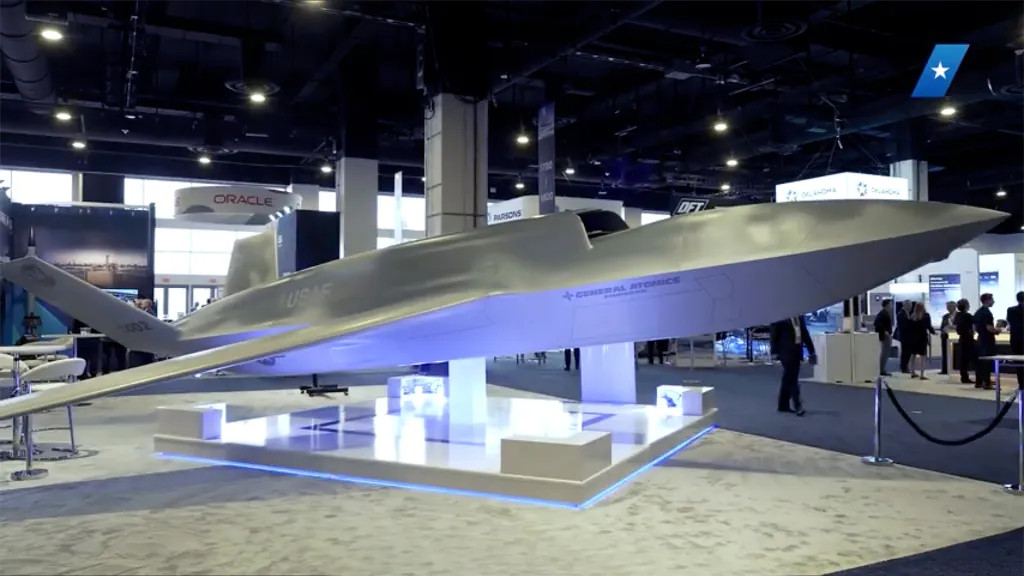
Q: That sounds like a difficult challenge.
A: It is a difficult challenge and that’s why you see something like an NGJ, which has its own power system. Because once it’s airborne, it doesn’t need any power from the airplane. It has its own. NGJ has a ram air turbine generator. It has doors on both sides that open up when it’s airborne, and it takes the air through those doors, turns a turbine and generates 82 kW.
Q: Would some version of the NGJ fit in a CCA at some point? Is it something you’re considering looking at?
A: I think the market is heading towards smaller form factor, as you’re describing. So I think there’s opportunity there.
Q: Is that something you are actually pursuing?
A: We’ve been investing in a smaller form factor. I can’t just tell you who’ve been working with on it, but you know, NGJ is 14 feet, 1,200 pounds. Depending on the size of the platform, you may have to have something smaller.

Q: Can you talk about what kind of platform? Crewed? Uncrewed?
A: I think both, there’s no reason why you couldn’t do it. NGJ in itself is pretty autonomous, especially if you’ve done the mission plan. A lot of those assignments are mission-planned, so you really don’t need any operator intervention. And we don’t talk about managing the assignments anymore. It’s not like the guy in the back is [doing] pushing-the-buttons kind of stuff. What we’re doing is managing the priorities of those assignments. So if it’s that radar you want to go after, that’s a higher priority than this other one. So mission-plan the priority of those assignments, and It’ll prosecute those targets autonomously.
Q: Has NGJ achieved initial operational capability (IOC) yet?
A: You’ll have to talk to the Navy about IOC and deployment. What I can tell you is that we’re delivering pods to the Navy. Operational testing has gone extremely well.
Q: When was the operational test?
A: Well, I think there’s still some pieces of it ongoing. But performance has been very, very good.
Q: Have you gotten any feedback or lessons learned from that [deployment on an operational cruise]?
A: Just like any new weapon system, I think when you put it in the hands of the operator, you learn something because those guys are smarter than you and I both. And they find new ways to use things. I think every day we learn something from operational tests, developmental tests, because the guys are actually putting it through its paces.
Q: But have you gotten any feedback from the Lincoln, which arrived with the pods in the U.S. Central Command region last month?
A: I can’t tell you what they’re doing operationally and where they are. What I can tell you is that we have field service representatives who support the squadrons. And we get feedback.
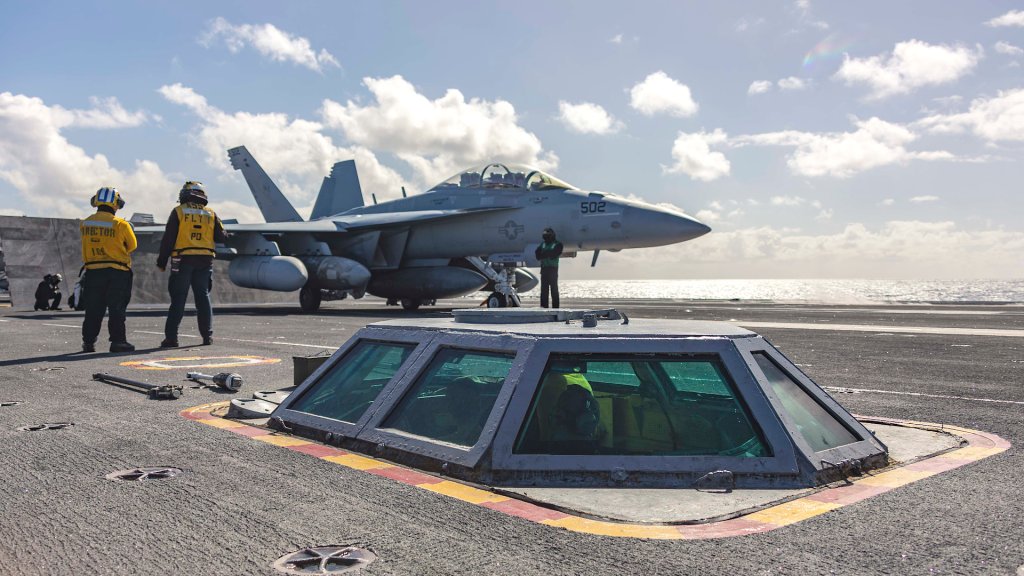
Q: Has anything that’s happened on Lincoln come back to you to figure out how to make things better?
A: We get all kinds of feedback from the Navy. Okay? I just can’t describe where it is. So I think what you’re starting to hear around is that everybody loves the Growler and NGJ. But there are only so many Growlers and so many NGJs, right? You can put this on the non-traditional EW platforms, the bombers, the fighters, maritime patrol, UAS…
Q: Tankers?
A: Tankers. You can put it on those, and you can automatically increase the EA capacity in the fight. And the other thing, and I’ll mention quickly, is that if you put it on a bomber whose primary mission is to shoot weapons, that’s what they’re there for, they’re going to drop weapons. So that non-kinetic effect of electronic attack is an enabler…it increases the capability of that kinetic effect, right? It’s really interesting working them together like that, and it’s something we hadn’t talked about. And again, increasing the magazine depth.
Q: Where are the adversaries like China and Russia on offensive EW? Can you say what you might be learning from them?
A: I think we learn from them every day. And then some things we learned that maybe we’ve known, and some things that we probably didn’t understand at the time, but I think it’s a very interesting threat landscape right now. And my belief is that electronic attack is one of those disruptive technologies and capabilities that’s really needed to prosecute the war, whether it’s in the South China Sea, or there’s [U.S. European Command] EUCOM and support with NATO wherever. I think it’s an incredible enabler. Revolutionary change.
Q: How would you rate China’s capabilities in terms of offensive EW? For instance, its Y-9LG electronic warfare aircraft recently took part in military drills with Thailand.
A: I don’t think there’s anything like what we have in the inventory. But clearly they have – like everybody else – they’ve moved the ball rather quickly on EW. Everybody has because technology is getting better. So they’re not doing the scanning antennas anymore, right? They’re doing something different. They’re using GaN [Gallium Nitride] in places, right? So I think it’s really, really important.

Q: How about the Russians? Can you assess their offensive EW capabilities?
A: I really can’t, I can just tell you that, just like the Chinese – and everybody – they’ve advanced their EW capabilities.
Q: This is an Air Force trade show. Talk about how putting NGJ on Navy Growlers helps the Air Force.
A: The [non-recurring engineering] NRE [cost] is done for NGJ, essentially, right? The DoD spent $3 billion, probably a little more than that, over all the NRE. So a service or a country could essentially pick that system up as it is and be able to use it. You’ll need to do some integration, that kind of stuff. But certainly, all the heavy lifting has been done. So there’s opportunity there, and of course, you drive the cost down. The other piece that we’re investing in, and the Navy’s investing in, is our production facility in Forest, Mississippi, where we’re now increasing the capability to test faster, to develop faster, and to produce it quicker.
End of interview.
Despite its importance, EW overall hasn’t historically received the budgetary support some U.S. military leaders say it deserves, a point Air Force Secretary Frank Kendall drove home during his keynote speech at the AFA conference.
“We started looking closely at electronic warfare for several reasons,” he said. “First of all, we thought it was a key enabler in almost every one of our operating barriers. Second, most of our electronic warfare programs are platform-centered, so there was a unifying focus on this area as a whole. My own experience suggested that this is a historically neglected area that can be that can have an oversized impact, but doesn’t compete well with our internal budget values relative to other priorities. We established cross-cutting operational neighborhood structure in this area try to bring more focused and conscious consideration to electronic warfare.”
Whether Kendall can match his support for robust EW with commensurate funding is something we will watch closely. There has been growing chatter about the F-15EX getting Next Generation Jamming pods to tie into its extremely advanced electronic warfare system, but that hasn’t been formalized at this time. There are significant investments being made in the new EQ-37 Compass Call fleet as well as updating the electronic warfare systems on existing fighters. The biggest leap may come with the F-35 Block IV, which will have an EW system that is touted as the most important aspect of the Block IV upgrade. All these elements and more could contribute to a new distributed EW strategy for the USAF that will only be bolstered by CCAs, new air-launched effects weapons and aircraft like the NGAD fighter and B-21 Raider. Clearly other developments are also happening in the classified realm. The service’s new Spectrum Warfare Wing will presumably help tie it all together. But considering the threat posed by China and Russia’s own growing EW capabilities, more funds flowing toward controlling the radio frequency spectrum are more likely than not.
Contact the author: howard@thewarzone.com
